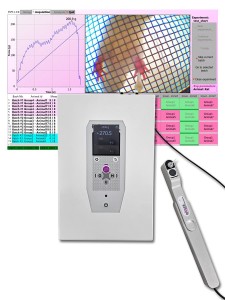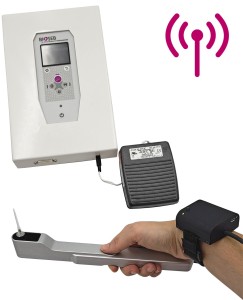Authors
X Chen, Y Le, SQ Tang et al
Lab
Department of Anesthesiology, The First PeopleÕs Hospital of Foshan, Foshan, Guangdong, China
Journal
Oxidative Medicine and Cellular Longevity
Abstract
Painful diabetic neuropathy (PDN) is a frequent and troublesome complication of diabetes, with little effective treatment. PDN is characterized by specific spinal microglia-mediated neuroinflammation. Insulin-like growth factor 1 (IGF-1) primarily derives from microglia in the brain and serves a vital role in averting the microglial transition into the proinflammatory M1 phenotype. Given that epigallocatechin-3-gallate (EGCG) is a potent anti-inflammatory agent that can regulate IGF-1 signaling, we speculated that EGCG administration might reduce spinal microglia-related neuroinflammation and combat the development of PDN through IGF-1/IGF1R signaling. Methods. Type 1 diabetes mellitus (T1DM) was established by a single intraperitoneal (i.p.) injection of streptozotocin (STZ) in mice. The protein expression level of IGF-1, its receptor IGF1R, interleukin 1beta (IL-1beta), tumor necrosis factor-alpha (TNF-alpha), and inducible nitric oxide synthase (iNOS) was determined by Western blot or immunofluorescence. Results. The spinal IGF-1 expression markedly decreased along with the presence of pain-like behaviors, the spinal genesis of neuroinflammation (increased IL-1beta, TNF-alpha, and Iba-1+ microglia), and the intensified M1 microglia polarization (increased iNOS+Iba-1+ microglia) in diabetic mice. IGF-1 could colocalize with neurons, astrocytes, and microglia, but only microglial IGF-1 was repressed in T1DM mice. Furthermore, we found that i.t. administration of mouse recombinant IGF-1 (rIGF-1) as well as i.t. or i.p. treatment with EGCG alleviated the diabetes-induced pain-like behaviors, reduced neuroinflammation (suppressed IL-1beta, TNF-alpha, and Iba-1+ microglia), prevented the M1 microglia polarization (less iNOS+Iba-1+ microglia), and restored the microglial IGF-1 expression. Conclusions. Our data highlighted the importance of maintaining spinal IGF-1 signaling in treating microglia-related neuroinflammation in PDN. This study also provides novel insights into the neuroprotective mechanisms of EGCG against neuropathic pain and neuroinflammation through IGF-1 signaling, indicating that this agent may be a promising treatment for PDN in the clinical setting.
BIOSEB Instruments Used
Electronic Von Frey 5 with embedded camera (BIO-EVF5),Electronic Von Frey 4 (BIO-EVF4)
Source :

 Pain - Thermal Allodynia / Hyperalgesia
Pain - Thermal Allodynia / Hyperalgesia Pain - Spontaneous Pain - Postural Deficit
Pain - Spontaneous Pain - Postural Deficit Pain - Mechanical Allodynia / Hyperalgesia
Pain - Mechanical Allodynia / Hyperalgesia Learning/Memory - Attention - Addiction
Learning/Memory - Attention - Addiction Physiology & Respiratory Research
Physiology & Respiratory Research











![Dynamic Weight Bearing 2.0 – Postural Module [Add-on]](https://bioseb.com/733-home_default/dynamic-weight-bearing-20-add-on-postural-module.jpg)
























 Pain
Pain Central Nervous System (CNS)
Central Nervous System (CNS) Neurodegeneration
Neurodegeneration Sensory system
Sensory system Motor control
Motor control Mood Disorders
Mood Disorders Other disorders
Other disorders Muscular system
Muscular system Joints
Joints Metabolism
Metabolism Cross-disciplinary subjects
Cross-disciplinary subjects CONFERENCES & MEETINGS
CONFERENCES & MEETINGS 
